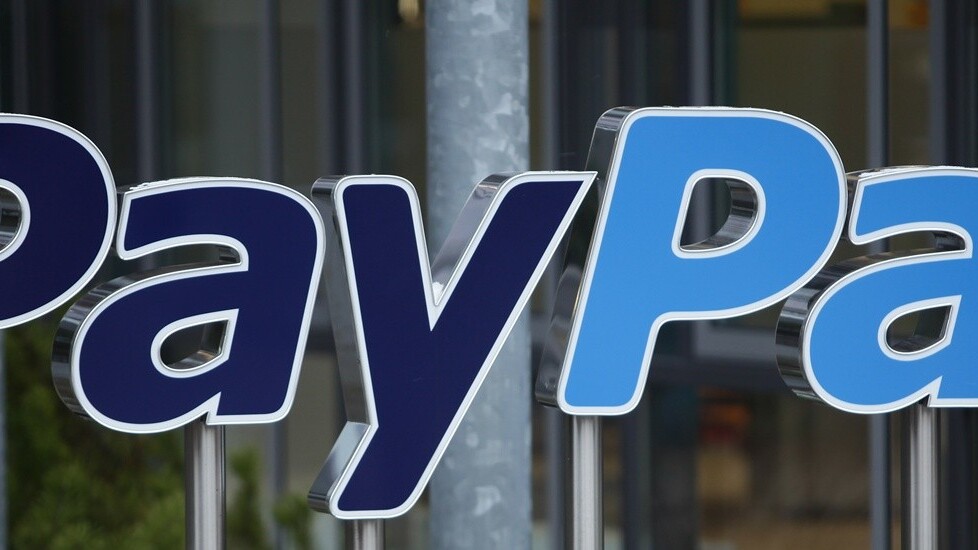
PayPal is getting back to its roots to focus on improving its core feature: the checkout process.
The payment processing company today announced that it is releasing an updated experience to its online checkout system. It will have a seamless integration with merchant websites that lets consumers buy products quicker and with the same process across all devices. It is expected to be released earlier this year worldwide.
Simplifying checking out
For the past few months, PayPal has been making improvements and releasing products aimed at helping the offline world, including the release of an updated mobile app. However, the company felt it needed to revamp its system to appeal to a greater mass of developers and merchants.
With its “in-context checkout“, PayPal says merchants will be able to convert more consumers. No longer will users be taken to a PayPal site to complete their transaction — it all happens right on that merchant’s website. Merchants and consumers will also be able to change funding sources within the workflow (previously this wasn’t allowed). Buyers can now elect to pay using their credit card or even PayPal’s Bill Me Later offering.
To help integrate this same redesign across mobile, tablet, or PCs, PayPal will be making available a single SDK and REST API that merchants can use instead of having to continuously add new technology when they want to leverage PayPal-supported services like Magento, eBay, or Braintree.
Additionally, consumers will soon be able to log into merchant websites and apps using their PayPal credentials. Carey Kolaja, Vice President of Global Product Solutions, tells us that this is aimed at helping consumers feel comfortable with accessing a retailer’s site without providing financial information directly to the store. To date, more than 137 million consumers have already shared their details with PayPal, so the new process takes advantage of its authentication system for the convenience of merchants.
Other features being planned for in-context checkout include authorization capture, reference transactions, recurring payments, adaptive payments, and digital goods.
So while this is good news for both merchants and consumers, we must ask ourselves “why now?” It has been 16 years since PayPal made its debut and only now is the company making such a significant change. In that timespan, it has found itself open to competition from the likes of Square, Stripe, Dwolla, and even Amazon with its “Login and Pay” service.
PayPal readily acknowledges that it has been slow on some fronts, but tells us that it hasn’t been dragging its feet. It says it’s been busy working on various aspects of the payment space, including things like fraud detection and others. However, one central theme that Kolaja shared with us is PayPal’s dream to become a well-rounded payment operating system — the eventual launch of this redesigned checkout experience and consolidated SDK and API feed is helping the company do just that.
Merchants and consumers can expect this refresh to be made available the first half of this year. Large retail merchants will be the only ones with access though, but there are plans for small- and medium-sized businesses in the future.
In addition, PayPal also shared updates on its Payment Code and Beacon programs. With the former, the company has partnered with MICROS and Discover while in the case of the latter, the hardware is being tested with a few merchants in the US and Australia and is estimated to be publicly available later this year.
New support for Payment Code
Announced in October, PayPal’s Payment Code is a way for consumers to pay for their goods using a QR code. Yes, that’s right … a QR code. When users want to purchase something using their account, they can check-in using the PayPal app. It will display a QR code or a four-digit short code to authenticate the purchase. Merchants take their barcode or QR code scanner and swipe it over the device and then it processes the transaction.
https://www.youtube.com/watch?v=gXBdbDiuaHc
Starting in February, Payment Code will be supported by additional point-of-sale technology providers in the US — specifically MICROS and Discover. How significant is this? With these new partners, PayPal payments will be accepted in 1.9 million merchant locations across the country.
These aren’t the only POS systems supporting Payment Code. Kolaja says that there are more than eight right now. This technology is being tested right now with 18 national brands in the UK in 17,000 locations. PayPal also has a commercial deal with an Australian taxi company where 350 cabs are using it with plans to expand to more than 20,000 later this year.
Beacon update
PayPal has revealed that Beacon is in active test mode, being used by a few merchants in the US and Australia. The company has plans to bring it to the UK, Canada, France, and Germany “soon”, but again, didn’t reveal specific timing.
Introduced at last year’s TechCrunch Disrupt conference in San Francisco, PayPal Beacon is a Bluetooth-powered check-in device that merchants can add to their physical store. When a customer walks near one, Beacon will emit a signal to their mobile device asking them to check in using the PayPal app. By doing so, it will inform store associates of the customer’s details so that they can provide a personalized shopping experience.
The company says that it expects Beacon to be integrated into PayPal’s mobile app later this year. At that point in time, merchants will be able to use the hardware in their stores.
Get the TNW newsletter
Get the most important tech news in your inbox each week.


